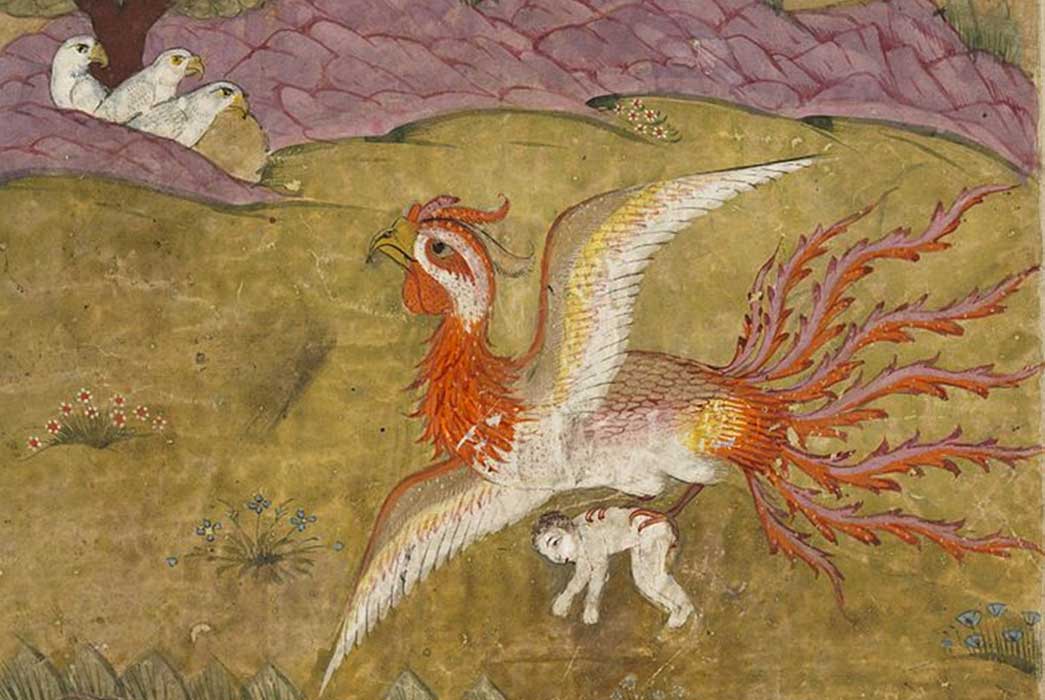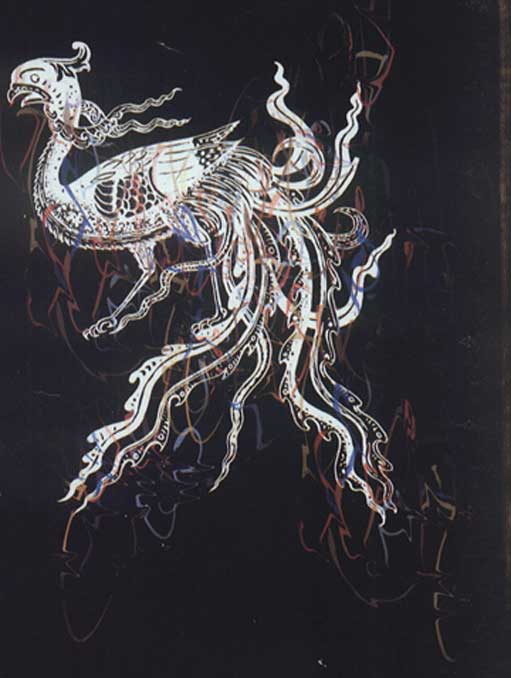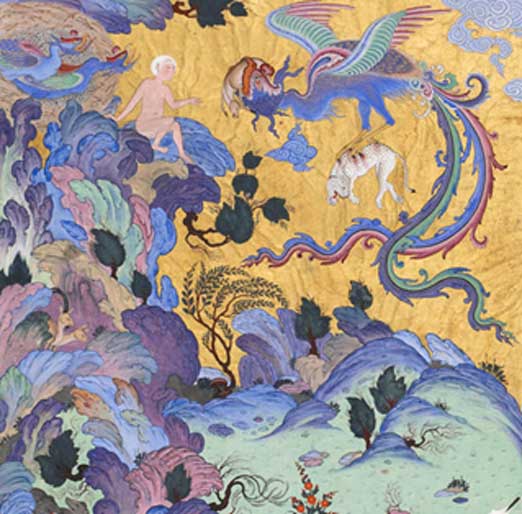
Simurgh, the Mysterious Giant Healing Bird in Iranian Mythology
The image of the serpent is widely acknowledged in western culture to symbolize medicine. One of the most recognizable symbols for medicine today is the rod of Aesculapius with its entwined single serpent. It was originally a symbol representing Aesculapius, the Greek god of medicine, from around the 6th century BC. In the early 20th century the US Army Medical Corps (USAMC) adopted the caduceus of the Roman god, Mercury, with its double entwined serpents capped with wings as a medical symbol, although it had no medical association in early Greek or Roman tradition. In contrast, Iranian mythology has no recorded evidence that the image of the serpent was ever associated with the practice of medicine or pharmacy. Instead, it was the mythical bird, Simurgh.

Simurgh (Image: Jahan-e-Khosrau / Free use)
The Simurgh was described as a peacock with the head of a dog and the claws of a lion. She was a creature big enough to comfortably carry an elephant or a whale. The Simurgh was said to be so old that she had seen the destruction of the world three times over. This afforded her so much wisdom and learning that she possessed the knowledge of all the ages. In one legend, the Simurgh was said to have lived for 1,700 years before plunging herself into flames, much like the Phoenix. The figure of the Simurgh can be found in all periods of Iranian art and literature, as well other regions that were within the realm of Persian cultural influence. In the Avesta, the Zoroastrian holy book, containing the oldest record of the Simurgh, the Simurgh is written as Meregho Saena. Later, the name ‘Saena’ was also associated with healers. In Farvardin Yasht, verses 97 and 126, several physicians have also been mentioned bearing the name ‘Saena’. In the Dinkard, a 10th century compendium of the Mazdaen Zoroastrian beliefs and customs, it is mentioned that there was a physician by the name of ‘Saena’ who was born 100 years after Zoroaster and who trained 100 students to be physicians, during his long life.
The Birth of a Hero by the First Caesarean Section
The Simurgh represented the union and served as a mediator and messenger between the Earth and the Sky. She lived in the ‘Tree of Knowledge’ and, when she took flight, her powerful ascent shook the tree's branches so violently that the seeds from every plant that had ever existed, were scattered throughout the world, bringing a wealth of valuable plants to mankind. Later, the Simurgh nested in seclusion on the sacred Persian mountain of Alburz, far beyond the climbing abilities of any man.
The most famous legend associated with the Simurgh is the birth of Rustam in the Shahnameh (The Book of Kings), a book of Iranian epic poetry written by Ferdowsi (936 - 1020 AD). According to the Shahnameh, Zal was an albino baby born to Saam, Iran's mythical hero, as well as the ruler of Zabulistan and Mazandaran. When his powerful father saw his albino son, he assumed that the child was the spawn of devils and abandoned the infant on the mountain of Alburz.

Detail from ""Zal is Sighted by a Caravan", from Tahmasp Shahnamah, showing Simurgh feeding its chicks and Zal in its nest. Sackler Gallery, Art and History Collection. (Public
Domain)
The baby’s cries were heard by the tender-hearted Simurgh, who lived on top of the mountain. The Simurgh retrieved the child and raised him as her own. The loving Simurgh taught Zal wisdom. However, like all young men, the time came when Zal grew into a man and wished to rejoin the world of men. The Simurgh, although saddened by this, gave him three golden feathers which he was to burn if he ever needed her assistance.
Upon returning to his kingdom, Zal fell in love and married the beautiful Rudaba. Rudaba experienced a very prolonged and difficult delivery of their son. Fearing that his wife would die in labor, Zal decided to summon the Simurgh. Zal burned a small piece of the wing that the Simurgh herself had given to him years before. As soon as the wing touched the fire, the sky suddenly darkened and the giant bird reigning over the world came down like a cloud. Grasping Zal’s predicament, she told Zal: "Do not be afraid and free your heart from all anxiety. Bring me a wise man and a dagger made of steel. You must make sure that the moon-faced Rudaba is drunk with wine to calm her and free her from the anxiety in her heart. Under my guidance, the wise man you call will deliver the child from the womb of Rudaba. He is to open the womb without giving her any pain, deliver the child and then stitch the bleeding cut. Get the plant I am going to tell you now, pound it with milk and musk and, after you dried them all in the shade, apply them to Rudaba’s wound. You will see for yourself that, after this treatment, your wife will stop feeling any pain. Then, when you rub my feather on it you will see the effect of my power." The grateful husband immediately carried out the Simurgh's instructions.




